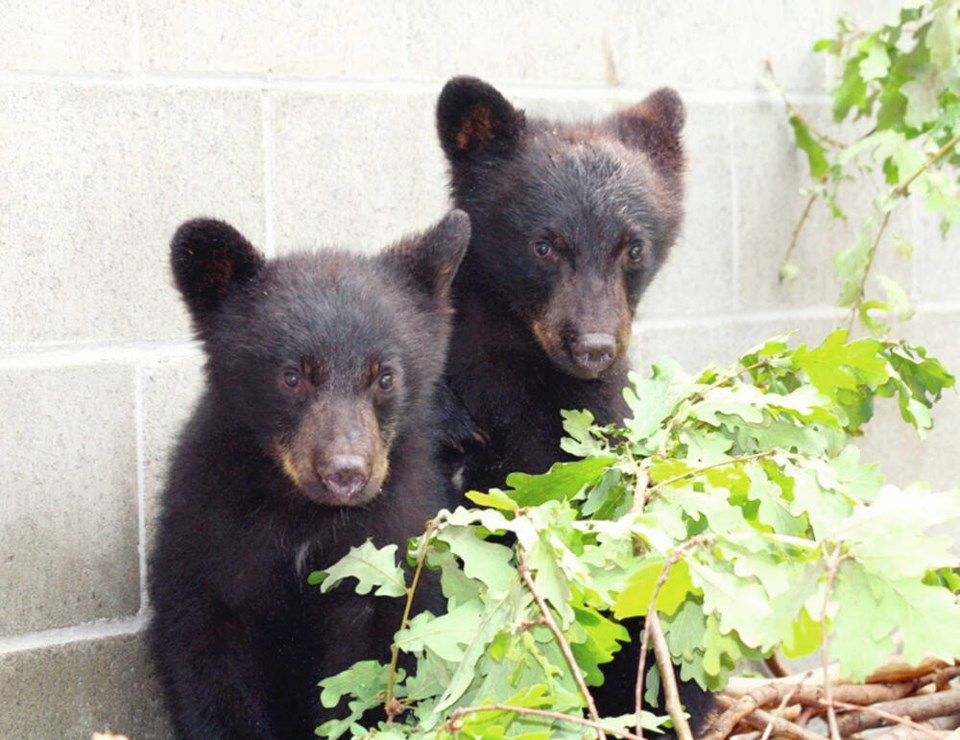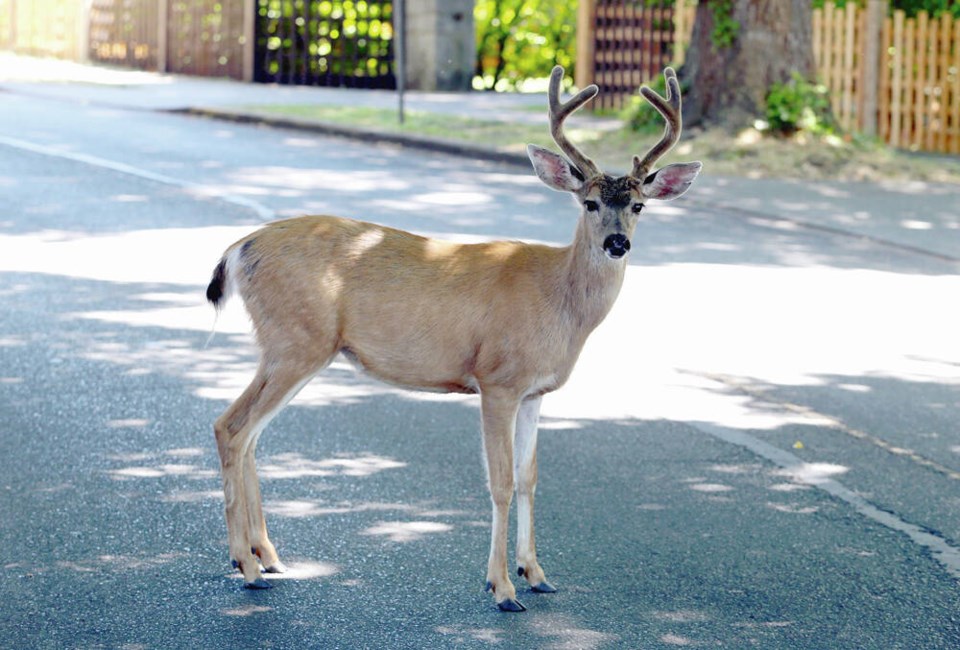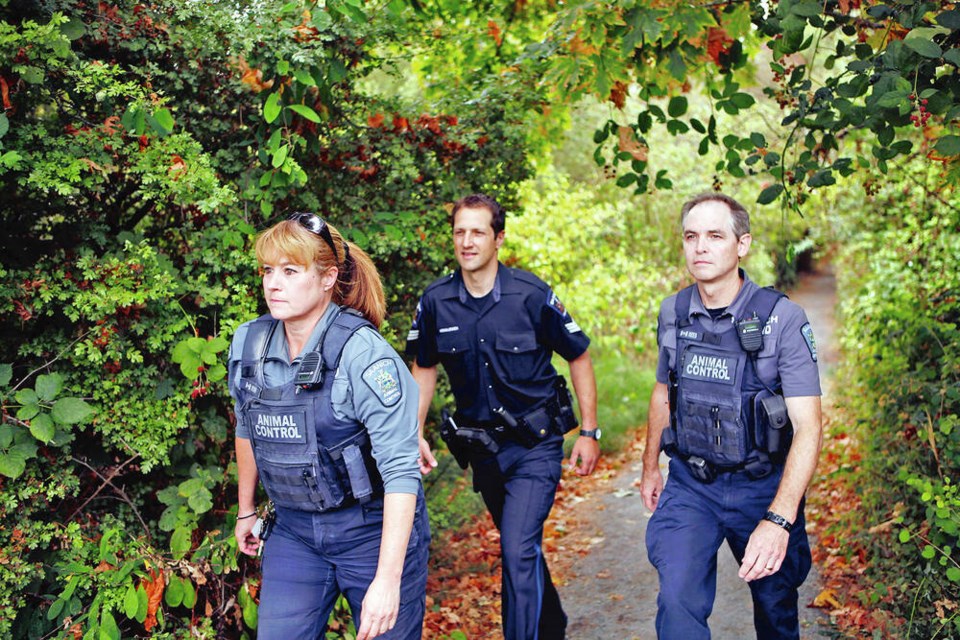The video is disturbing to watch.
In an attempt to euthanize a mule deer injured by a vehicle, a Lethbridge police officer is seen repeatedly running over the animal with his truck in January 2019. The animal’s piercing screams can be heard in the 15-minute video posted online by a bystander.
Public outrage led to the first investigation of an animal death by Alberta’s police oversight body. In its June 2019 report, the Alberta Serious Incident Response Team concluded that the officer’s actions likely prolonged the deer’s suffering, but didn’t warrant criminal charges.
Working alone, the officer had ruled out the most humane method — shooting the animal — fearing ricocheting bullets in the populated area. Fish and wildlife officers were unavailable. And the Lethbridge police had no standing agreement to cover veterinarian costs.
“Taking emotion out of the equation, the officer was able to put the deer out of its misery within approximately 15 minutes,” the report states.
“I watch a lot of animal cruelty videos, and this one really got me,” said Camille Labchuk, a lawyer who is executive director of Animal Justice, a Toronto-based non-profit that advocates for the humane treatment of animals.
She criticized the report for discounting the officer’s obligation to seek out those better equipped to help the animal. “They ‘humane washed’ the incident to the benefit of the police,” she said.
The Lethbridge case highlights public concern over police accountability when it comes to use of force on animals — and raises the question of whether some portion of police budgets should go to non-police agencies better trained to respond to increasing numbers of animal-human encounters.

A former B.C. conservation officer, Bryce Casavant, says the lack of adequate oversight sends a dangerous message to police: “The government doesn’t really care if you use your service weapon and kill the non-humans.”
Casavant received international attention in 2015 after he was fired from the B.C. Conservation Officer Service for refusing to kill two orphaned bear cubs near Port Hardy. The B.C. Court of Appeal later quashed his termination, a decision recently upheld by the Supreme Court of Canada. He is a senior compliance and enforcement specialist with the Ministry of Forests, Lands and Natural Resource Operations.
“I go back to the fundamental principles of lethal force,” said Casavant, who is qualified as a use-of-force instructor and has trained police and military officers internationally for over a decade.
“If we look at lethal force as a last option, it shouldn’t matter whether it’s an animal or human — the principles of de-escalation and alternative measures should first apply.”
Casavant, who earned a doctorate for his research on the history of the Conservation Officer Service, points to the high number of bear and cougar killings by that agency as an example of what can go wrong when basic use-of-force principles are disregarded in animal policing.
When it comes to police officers who are authorized to use their service weapons on both animals and humans, Casavant argues playing fast and loose with use-of-force principles in interactions with non-humans may desensitize police to lethal force on humans.
“If we allow officers to practise the act of killing, day in, day out, on non-human species, are we desensitizing them and predisposing them to greater potential of lethal force on humans? Are you more likely to grab your weapon than attempt de-escalation? Is that officer predisposed for aggressive behaviour in a human interaction? I argue that, potentially, yes.”
“And that’s why non-human species become so important in this concept of appropriateness of use of force and the standardization of use of force models.”
A lack of training
Jim Osorio, a Texas-based law enforcement trainer who has worked for almost four decades as an animal-control officer, animal cruelty investigator, deputy marshal and police dog handler, has similar concerns.
“[Police] don’t learn the first thing about how to handle an animal encounter in the academy,” he says.
Osorio began offering canine-encounter training in 2003 after viewing a video of an officer shooting a tail-wagging dog in Tennessee. Today he’s recognized as an expert in the field, contacted by police departments around the world after highly publicized dog shootings or court cases.
Osorio wants officers to learn there are options other than firing their weapons. He trains officers how to read an animal’s behaviour and how to use non-lethal tactics and weapons.
“All those tools they carry, the batons, their OC [pepper] spray, all that stuff, they’re trained to use on a person, not an animal,” says Osorio. “There’s definitely different ways to use their equipment against an animal … and they need to know the differences.”
Over the course of his career, Osorio has never had to shoot a dog. “I’d rather go hands-on than shoot an animal,” he said, citing the dangers of stray or ricochet bullets.
In B.C., recruits leave the police academy with no animal-encounter training. Officers have come to rely on informal “tailgate training”and assistance from animal-control officers, the B.C. Conservation Officer Service and the B.C. SPCA.
“We ask for advice from our animal-control officers, who are our go-to experts on how to dispatch a deer,” said Saanich Const. Markus Anastasiades.

Saanich is the only police department in B.C. to employ full-time animal-control officers — two of them at an annual cost of $324,000, paid for out of the police budget and dog licensing fees of approximately $200,000.
Saanich police report the highest numbers of animal shootings in B.C. — mostly deer euthanized after being hit on two busy highways. Use-of-force data from the B.C. Public Safety Ministry suggests these animals were humanely killed with, on average, one shot.
In Vancouver — home to an estimated 60,000 to 90,000 dogs — animal-control officers are contracted by the city as first responders on animal complaints and handle any dogs present during police operations.
About half the animal services’ annual budget of $1.7 million is paid for by dog licensing fees, the other half by taxpayers. Trained in animal behaviour, animal-control officers don’t carry firearms, batons or pepper spray, and can’t kill a dog without a court order.
A Vancouver Police Department spokesperson, Const. Tania Visintin, said in an email that a 30-year veteran of the department could not recall any Vancouver police officer shooting an animal. (In Houston and Chicago, U.S. cities with populations similar to Metro Vancouver, dog shootings number in the hundreds every year.)
In many B.C. communities, RCMP respond more often than conservation officers to wildlife calls, said Insp. Kevin Van Damme of the B.C. Conservation Officer Service. “There’s definitely not enough conservation officers to be able to respond to that volume of animals,” said Van Damme, who has been with the service for 30 years and is responsible for training.
In communities grappling with increased wildlife encounters, Van Damme said, conservation officers informally train police.
While Van Damme would like to see more conservation officers hired, he sees a continuing role for police: “I would hate to see a deer suffer for hours and hours because the mandate was dedicated to one agency that just didn’t have capacity to respond.”
Environmental groups, affected communities and the conservation officers’ union have long criticized underfunding of the Conservation Officer Service.
Similarly, while the B.C. SPCA works with police to enforce animal-cruelty laws, it receives no government funding.
System ‘not’ broken
For Van Damme, a bad decision by one Lethbridge police officer does not signal a broken system.
“I don’t believe police officers are going out there and not following the effective protocols when to put down an animal,” he said. “If they were, the public would be calling us and we’d be investigating the situations and we don’t see that.”
The Independent Investigations Office of B.C. becomes involved only when an officer causes death or serious harm to a person. The treatment of animals is not expressly referred to in the definitions of misconduct investigated by the Office of the Police Complaint Commissioner or the RCMP Civilian Review and Complaints Commission. And internal police department reviews, often promised after animal shootings in the media spotlight, are rarely made public.
Changes to the Police Act to explicitly address excessive use of force on animals are not being considered by the all-party committee considering reforms to the legislation. But Casavant would like to see the Conservation Officer Service designated as a law-enforcement agency under the Police Act. He believes this would allow for greater oversight of officers in their use of lethal force on animals in the province.
In April 2021, the RCMP updated its use-of-force model to emphasize de-escalation. But it remains to be seen if this policy change will have an impact on police encounters with animals or humans.
Osorio says after police officers attend his canine-encounter training program, they are less likely to shoot an animal. It’s an outcome that keeps him working with police officers all over the U.S. and internationally.
He has never been contacted by a Canadian police service.
Suzanne Baustad is a 2021 recipient of the Langara College Read-Mercer Journalism Fellowship. This feature was produced through the fellowship.



